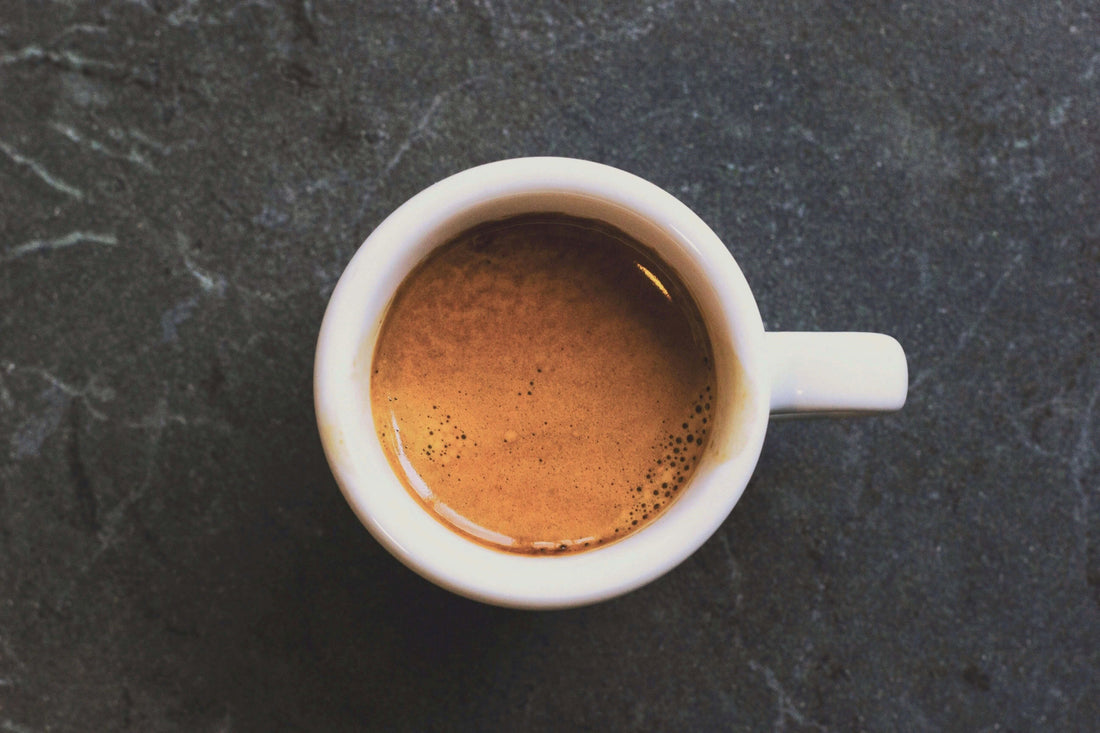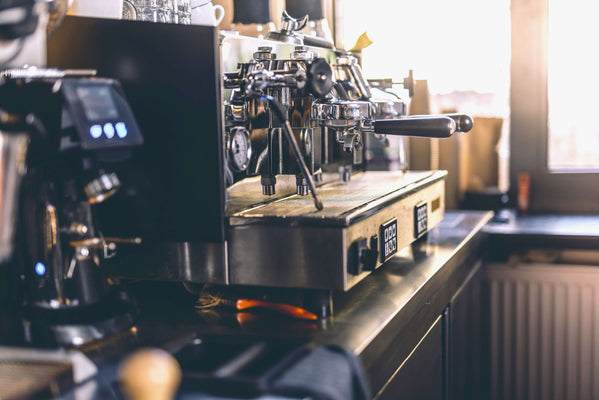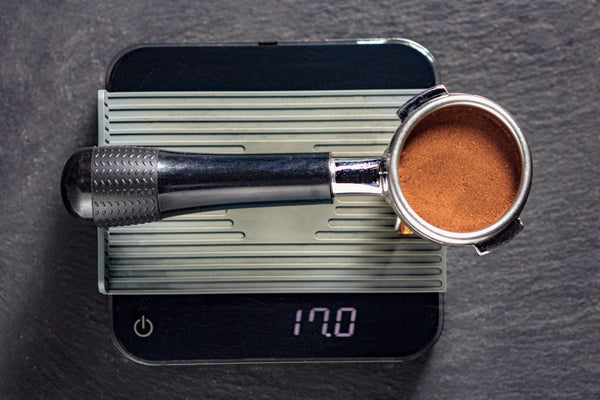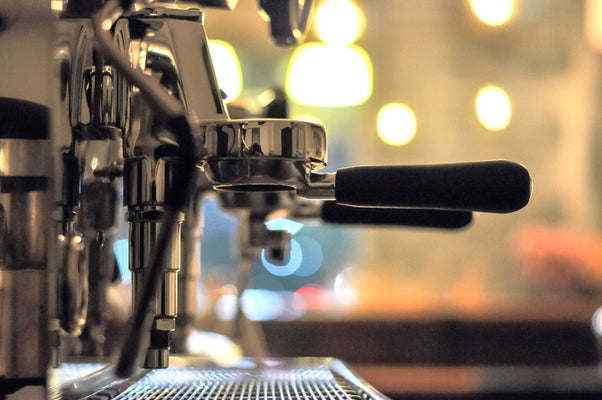
The Four Steps of Espresso Preparation
tai attitude4 min read
This article is about how to prepare espresso in a coffee bar or in an environment where an espresso grinder, espresso machine, and tools are accessible.
The focus is placed on understanding four crucial skill steps that affect the quality (deliciousness) of espresso and executing them well to make good, even extraction every time.
Before we begin, be sure to already have a dialled-in/calibrated recipe for the espresso.
To learn about dialling-in espresso, read this article.
Generally, preparing espresso can be summarised in four key steps in sequence: Dose > Distribute > Tamp > Brew
Dose
To dose an amount of ground coffee on demand for quality and freshness.
To achieve the dose:
i. Take the pre-warmed portafilter from the group head and knock the used espresso puck into the bin (if there is one). Use a clean cloth to wipe the filter basket clean and dry.
ii. Tare the portafilter on the weighting scale to zero.
iii. Place the portafilter on the espresso grinder and freshly grind the ground coffee onto the filter basket.
iv. Adjust the timer or gravimetric settings on the espresso grinder to reduce waste for the next shot. (if available and necessary)
v. Place the portafilter with ground coffee on the weighting scale; use a spoon to remove the excessive or grind more to add the insufficient, accordingly.
 The dose step is fairly straightforward; the aim is for a fresh, correct amount of dose with the least waste.
The dose step is fairly straightforward; the aim is for a fresh, correct amount of dose with the least waste.
Distribute
To evenly distribute the ground coffees within the filter basket, ensuring a consistent density from left to right, top to bottom.
There are two main effective ways to distribute ground coffee: the tapping method or using distribution tools.
The key to successful distribution is to stick with one of the ways and practice it consistently for the same dial-in/calibration.
To achieve distribution:
i. Be sure the dose is precise according to the dialled-in/calibration recipe.
ii. Do either a or b of the following:
a) For the tapping method, gently tap vertically on the table for one time, and then lift up the portafilter to tap horizontally a few times until the ground coffee is levelled flat.
 Have caution with the warm metallic surface area of the portafilter.
Have caution with the warm metallic surface area of the portafilter.
Or
b) For using the distribution tool, proceed to use the distribution tool of choice to level the ground coffee.
 The distribution tool is spun by hand to spread the ground coffee evenly within the filter basket.
The distribution tool is spun by hand to spread the ground coffee evenly within the filter basket.
Tamp
To tamp is the action of compressing the ground coffees to achieve two key results: removing the air trapped between them and reaching maximum density.
Tamping requires an essential tool known as a tamper, which is used to remove the air trapped between ground coffees while also packing the ground coffees tightly in the filter basket.
Use a flat tamper or an automatic tamper for best results.
Ground coffee is hard, as a barista will not be able to crush it with merely the force of hand. Therefore, there is no such thing as over-tamping.
By tamping to the maximum density (when the tamper no longer moves), this ensures an even density for the espresso puck, which will lead to better shot consistency.
To achieve tamping:
i. Place the tamper 90 degrees perpendicular to the distributed ground coffee.
ii. Gently apply force by using the tamper to the ground coffee; keep pressing until the tamper stops moving.
iii. Gently lift up the tamper with a twisting polish (rotational upward motion) to eliminate the vacuum effect (suction).
 Twisting polish prevents the formation of cracks at the side of the espresso puck, which, if they happen, may lead to channelling.
Twisting polish prevents the formation of cracks at the side of the espresso puck, which, if they happen, may lead to channelling.
Channelling is when, during brewing, water finds a narrow path through the espresso puck instead of flowing through the entire espresso puck evenly.
Brew
To brew is the step of carefully locking the portafilter to the espresso machine’s group head and engaging.
To brew efficiently:
i. Purge hot water (~3 seconds) from the group head to remove previous-brewed ground coffee residue and ensure a stable temperature of the water.
ii. With care, gently lock the portafilter on the group head.
Any knocking on the portafilter may lead to the formation of cracks in the espresso puck, which may lead to channelling.
iii. Put a cup on the weighting scale, tare to zero, and place both under the portafilter.
iv. Press the engage button (or flip the switch or pull the lever) to brew espresso.
v. Disengage the brew when the targeted amount of espresso liquid is yielded into the cup.
 The observation of the barista is the last crucial piece during the brew step.
The observation of the barista is the last crucial piece during the brew step.
Extra information
The more the barista practices it, the better the execution of dose, distribute, tamp, and brew will be, resulting in good espresso after espresso.
Ingredients matter just as much as skills. Use good-quality coffee beans and clean-tasting water for quality espresso-making.
For longevity, handle the coffee equipment with care and hygiene. Keep the bar station clean after brewing; dedicate a brush for the grinder area and a wet cloth for the espresso machine area.
A well-functioning espresso grinder disperses 99% of coffee grounds onto the filter basket with minimal waste. Regular maintenance prevents imprecise dosing or clumping issues.
Routinely backflush the espresso machine's group head and detach the filter basket from the portafilter for cleaning to prevent the buildup of rancid flavours, further ensuring quality and consistency.



